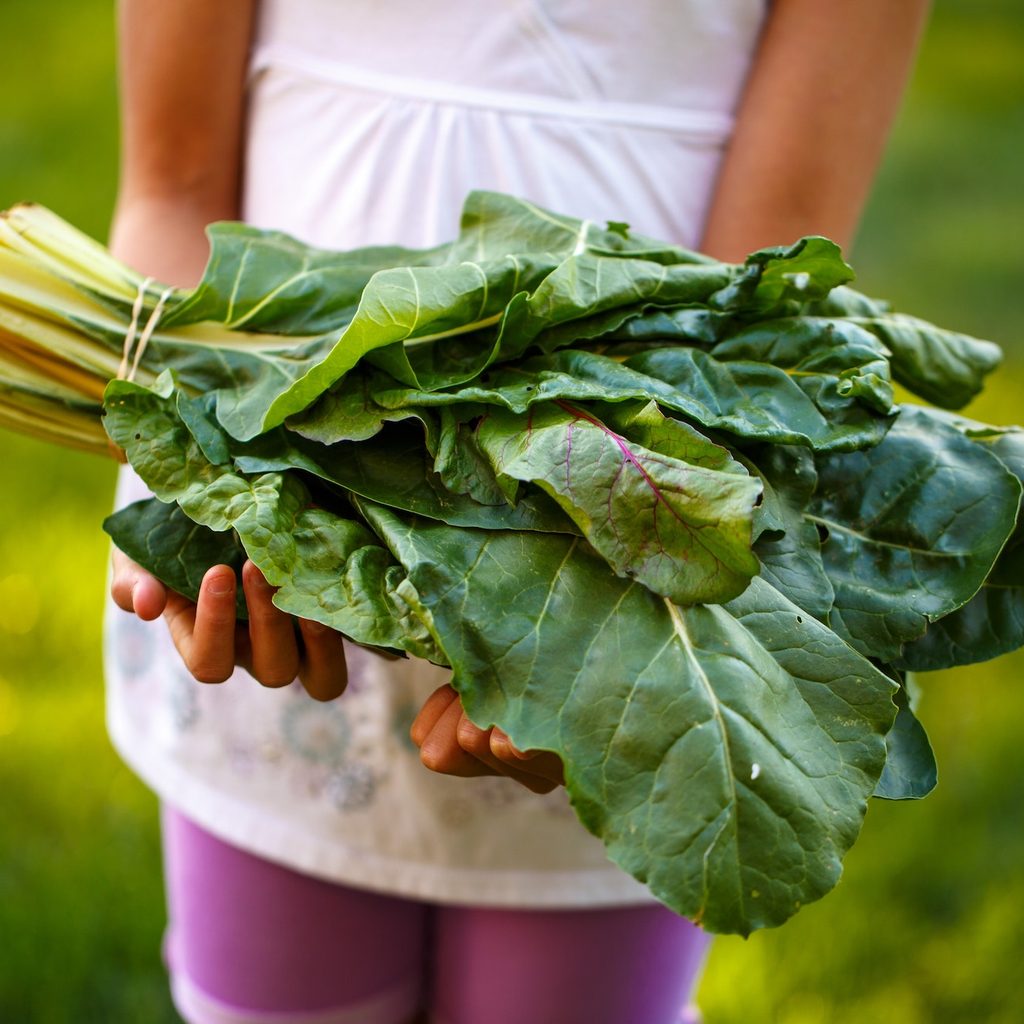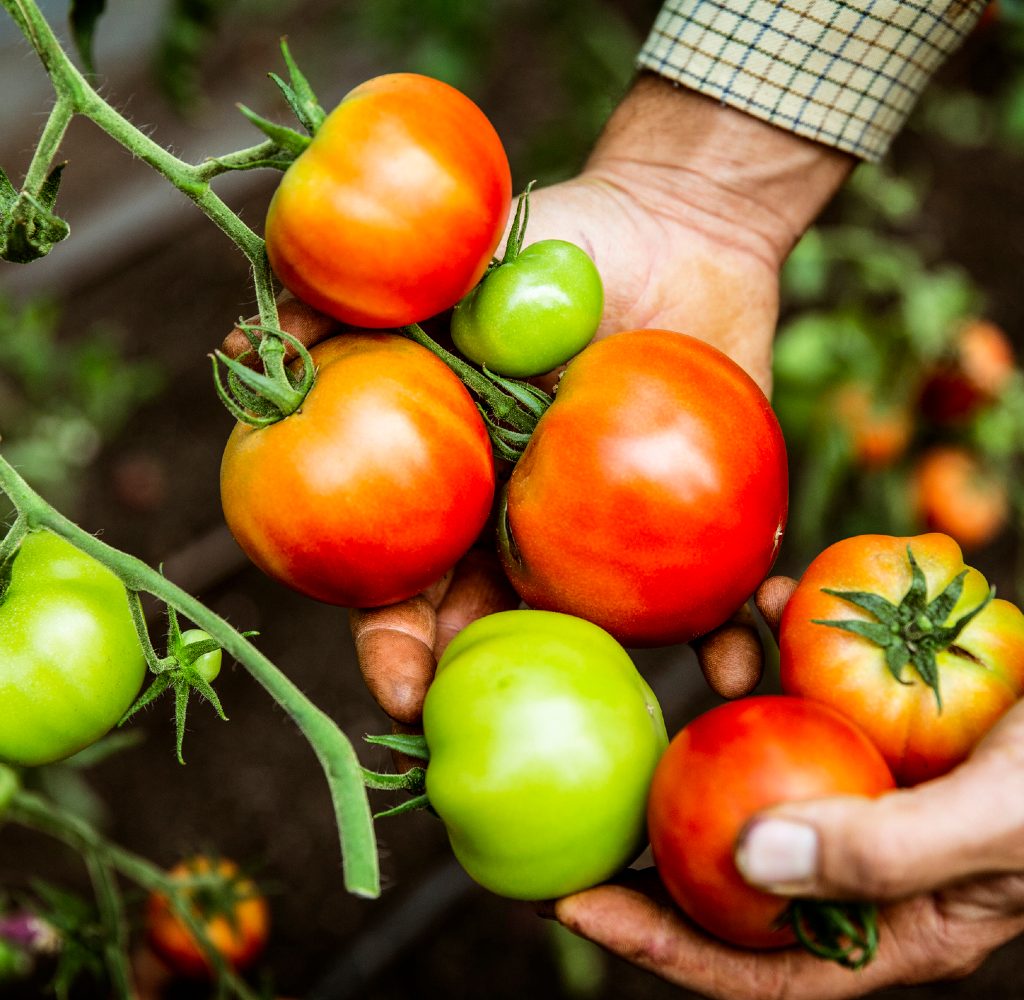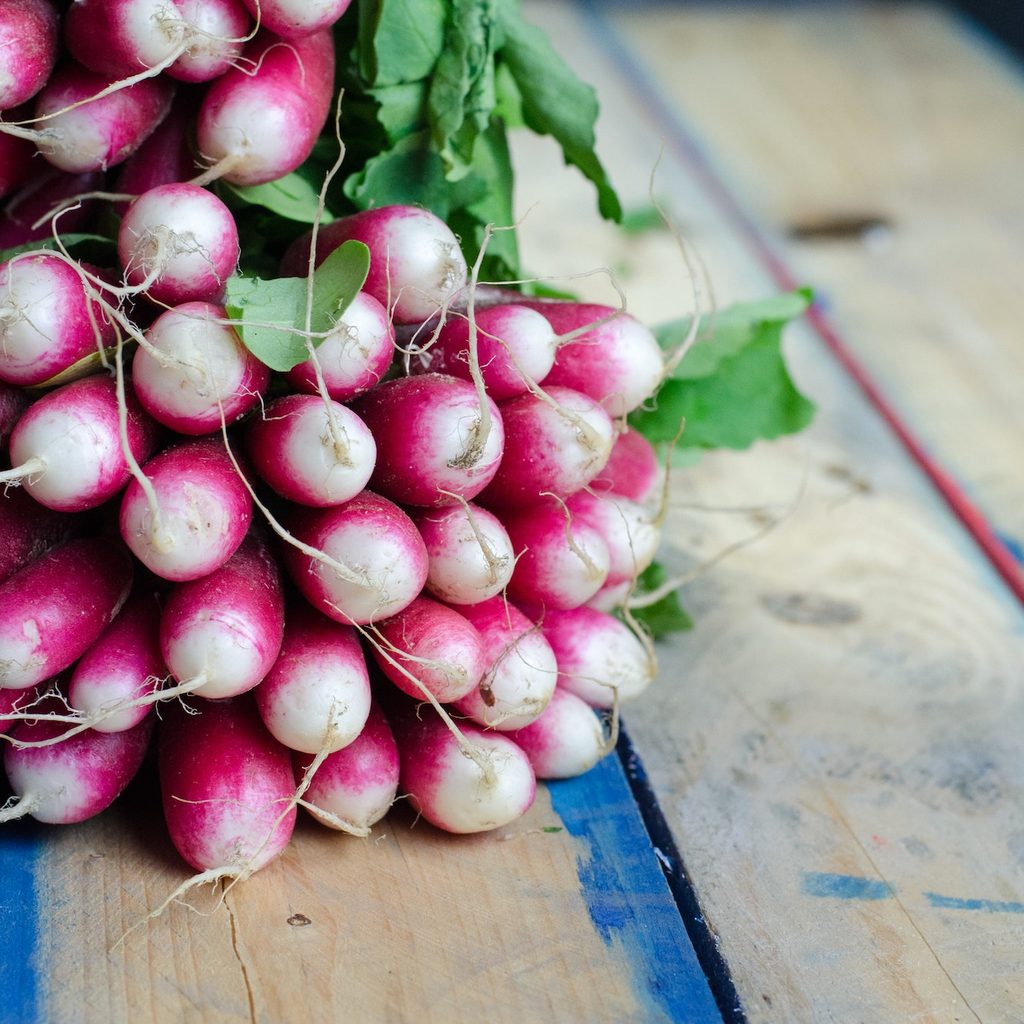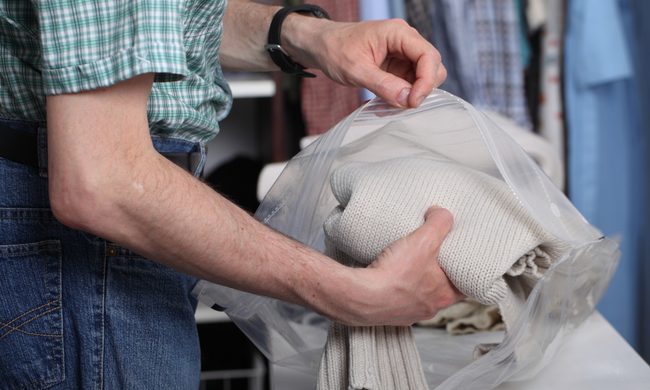Whether you want to be healthier or just want to make your garden more useful to you beyond having pretty flowers, growing vegetables at home can be easy and rewarding. Of course, some vegetables require the space and labor of a farm and a master gardener. These eight plants, though, are great to grow in your backyard or a community garden container box — they don’t require special expertise or a lot of work.

Lettuce
Lettuce seeds of all varieties are available at most nurseries and can make at-home salads easy and convenient to put together. Lettuce prefers cooler weather, so planting it in either the spring or fall is the best option. Gardening Know How says, a lettuce plant can actually withstand temperatures as low as 45° F — maybe that’s where the term Iceberg lettuce comes from! If you’re lucky enough to have a greenhouse, these hearty, leafy greens can be grown year-round.
What is great about lettuce is that you don’t have to start a seed and then plant it; they can just be sown directly into your garden bed in six-inch bands. A good option is to plant them every two to three weeks so you’re not overrun with lettuce and forced to eat it nonstop. Freezing is not an option despite its fondness for colder temperatures.
When leaves are two to four inches long, they are ready to pick, wash, and eat. Make sure to pick along the outside of the plant so it can keep growing new leaves.
Spinach
This leafy green powerhouse of a vegetable has seeds that can also be directly sown into soil with a bit of compost (if it’s available). Like lettuce, you can plant these in full sun or light shade. What’s great about this vegetable is that it can be planted pretty much year-round. However, you should try to do it when it’s still cold outside. Most varieties of spinach can tolerate temperatures as low as 15° F, but if you’re planting in fall, it should be done about two months before the first frost is set to appear. Late winter, early spring is the ideal time, suggests Bonnie Plants.
The savoy, semi-savoy, and flat-leaf varieties are the best to plant, and one seed packet can make up to five months of vegetables. Often, gardeners will need to thin out planted spinach seedlings to allow plants space to grow. When you sow or thin out your seeds, make sure there are about six to 12 inches between them.
Squash and zucchini
Even just one of these plants will yield a lot of vegetables, almost more than you can eat. Squash and zucchini seeds, regardless of whether they are summer, pattypan, or heirloom costata romanesco, can be started indoors and moved outside during growing season. However, it’s easier and faster to simply purchase seedlings of these vegetables to plant outdoors in some soil. Also, use a healthy amount of fertilizer on the zucchini — they get very hungry!
Squash appreciates direct sunlight and space to spread its vines along the group or up a garden trellis. Watering frequently and fertilizing the plant once a month is recommended, as is harvesting pretty often to make room for new vegetable growth. These can be picked when they reach two to three inches in diameter for round varieties or four to six inches long for the others.
Cucumbers
If you enjoy a cool cucumber in the heat or in its pickled form, then you’re in luck, because these are quite easy to grow in a garden or container box. Unlike leafy greens, cucumbers like warmer weather and should be planted after the last vestiges of cold weather have left your area. These seeds can be planted directly in some well-fertilized soil using compost — are you sensing a pattern here?! Or, you can purchase seedlings to plant as well.
What’s great about cucumbers is that you can grow the shorter, smaller varieties even when space is an issue. Like with squash, planting them with a trellis for its vines to grow in full sunlight is best. Cucumbers are ready to pick as soon as they grow to their full size, which depends on the variety.

Tomatoes
There’s nothing quite like the taste of fresh, homegrown tomatoes, and they’re easy to grow in a garden or even in a pot on a patio. The larger varieties can take about 12 weeks to produce fruit that is ready to harvest, but cherry tomatoes will be ready in about two months, and a plant can keep producing for up to six years!
A seedling can be planted once spring frost has passed. The fastest-growing varietals are Sun Gold, Jasper, and Sunrise Bumble Bee, but there are even types to specifically grow in confined spaces like balconies. Tomato plants should be tied to a stake as it matures to allow for vine growth. If you are planting them in a full garden, make sure to leave plenty of space between these and peppers since bees can cross-pollinate the two and ruin some of the flavor of your tomatoes.
Peas
A great early spring (about a month before the last frost) or late Summer vegetable to grow on your own are peas, particularly snap peas. These are a wonderfully low-maintenance vegetable that has minimal problems with diseases or pests, save for extreme heat.
Some varieties, like the super sugar snap peas, will need a trellis to grow up, but there are also Alderman heirloom garden peas that don’t take up as much as space. It’s best to sow these seeds directly into some well-fertilized soil rather than starting them indoors and moving them.
Green beans
While these warm weather-loving plants can attract bugs that like to eat its leaves, green beans are relatively simple to grow. Depending on the variety, they can either grow on a bush or get helped along by planting a trellis. SFGate says, “Green beans grow as either bushes or vines, depending on variety, but either type requires temperatures between 50 and 85 degrees Fahrenheit to thrive.”
Seeds can go directly into soil, preferably with compost on top. Bush beans can produce pods ready to pick, wash, and eat as soon as two months after planting. You can harvest these fresh or after the pods have dried and the peas have hardened for easy storage.

Radishes
As a root vegetable, radishes are a quick, easy vegetable to grow in a garden or even a bucket or container. Their spicy taste can add some pep to your salads and other cooked dishes in as little as three weeks from planting.
Just watch out, because one seed packet can yield hundreds of radishes! You’ll definitely have to explore recipes and maybe share with others. When figuring out if they are ready to harvest, pull back the roots to see if the bulb has grown, and do a taste test.
While a flower garden is a wonderful addition to any yard, container garden, or even windowsill, growing your own vegetables can be exciting, easy, and economical. These vegetables are good for any gardener to grow, even novices, as long as you keep in mind planting, fertilizing, and watering schedules.
Meanwhile, if you want to learn more, read on further to know what to do to repurpose old planters.


